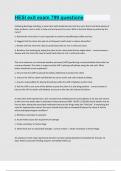Summary
Summary Grade 9_Economics and Management [EMS] Science Summaries
- Institution
- 9th Grade
A complete summary of the content of Economic and Management Science Grade 9, which meets the requirements as set out in the CAPS / CAPS curriculum. Colorful side notes have been added to enhance the learning experience.
[Show more]












